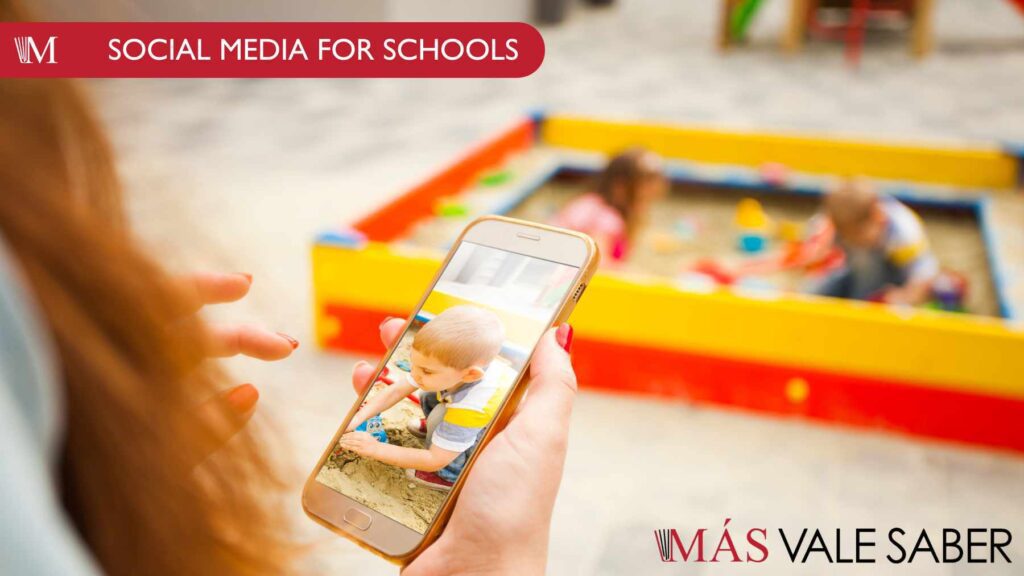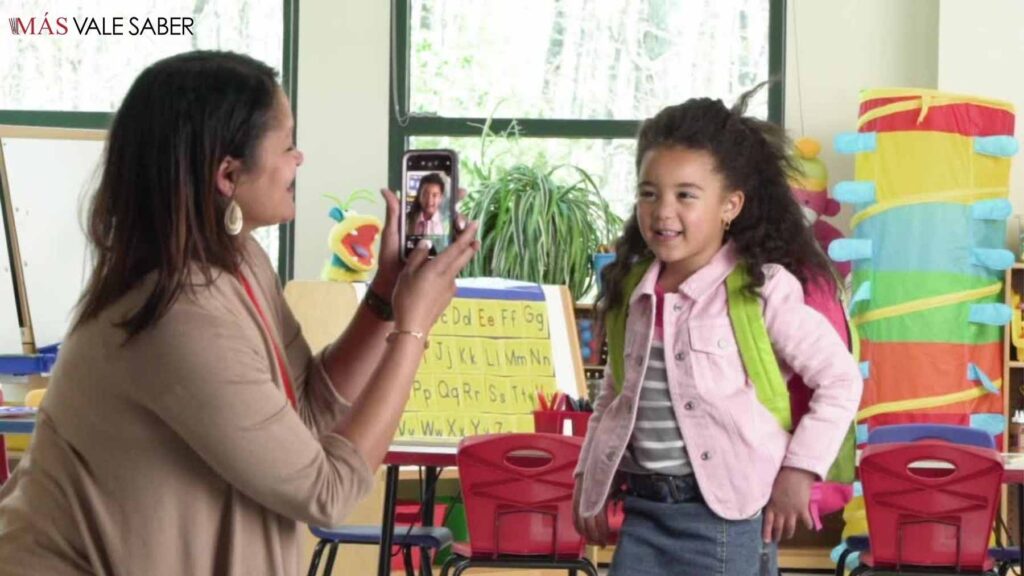
Ah, social media for schools. The magical realm where school spirit meets the digital age. If you’ve ever found yourself wondering how to manage a school social media account, you’re in the right place. Let’s dive into the nuts and bolts of capturing great content and, perhaps more crucially, delegating the work that goes into capturing and posting school social media content.
Before you jump into content creation, make sure you’ve already reviewed and selected the best social media platforms for your school.
Capturing Great School Social Media Content
First things first—content is king. But what kind of content should you be capturing and posting on your school social media account? Let’s break it down:
Authenticity is Your Best Friend
Nobody wants to see another generic stock photo of smiling students staring blankly at a computer screen. Capture real moments—students engaging in activities, teachers inspiring minds, and those candid shots that show the true essence of school life. Think about it: what would you rather see? A posed picture or a spontaneous snapshot of students’ excitement during a science experiment gone delightfully haywire?
Behind-the-Scenes Access
Give your audience a peek behind the curtain. Showcase the preparation for the school play, the chaos of setting up for a big event, or the teachers’ room antics during lunch break. It’s like a backstage pass to the daily grind and the highlights of school life.
Celebrate Achievements
From sports victories to academic triumphs, make sure to shine a light on student achievements. But don’t just stick to the obvious. Highlight the quieter victories too—the student who finally grasped a tough concept, the successful fundraiser, or the art project that blew everyone away.
Use Stories and Reels
Instagram Stories and Reels are where the magic happens. They’re perfect for quick updates, fun snippets, and engaging with your audience in a more casual, ephemeral way. Plus, they disappear after 24 hours, so there’s less pressure to be perfect.
User-Generated Content
Encourage students, teachers, and parents to share their own photos and videos. Create a unique hashtag for your school and prompt your community to use it. This not only increases engagement but also provides a treasure trove of content that shows diverse perspectives.
Free Content Creation and Management Tools

Managing a school’s social media can be made much easier with the right tools. Here are some free content creation and management tools that can help streamline your process:
- Canva: A user-friendly design tool that allows you to create stunning graphics, posters, and social media posts with ease. Canva offers a wide range of templates tailored for educational purposes.
- AirTable: This project management tool combines the functionality of spreadsheets and databases. AirTable helps you organize and track content schedules, making collaboration seamless.
- CapCut: An intuitive video editing app that lets you create engaging videos with professional-quality effects and transitions. CapCut is perfect for editing short clips for social media.
- LinkTree: A simple tool to manage and share multiple links through a single URL. LinkTree is great for directing your audience to various resources, such as your school’s website, blog, and social media profiles.
Who Should Be in Responsible for Managing School Social Media Content?

Now, onto the million-dollar question: who should be at the helm of your school’s social media ship? It depends on your school’s resources, but here are some options to consider.
A Social Media Savvy Teacher
Often, the best choice is a tech-savvy teacher who knows the ins and outs of the school. They’re already involved in the community and can capture moments authentically. Plus, they have the added benefit of being able to blend educational content seamlessly with fun updates.
A Dedicated Social Media Coordinator
If your school has the budget, hiring a dedicated social media coordinator can be a game-changer. This person can focus solely on curating and creating content, engaging with the audience, and analyzing metrics to continuously improve the strategy. They’ll have the time and expertise to keep your profiles buzzing with activity.
The Student-Led Approach
Empowering students to take charge of social media can be both innovative and educational. Create a social media club or a student internship program where they can earn credit or volunteer hours. This approach not only lightens the load on staff but also ensures the content is fresh, relatable, and vibrant.
The Hybrid Model
Consider a combination of the above options. A teacher or coordinator could oversee the overarching strategy and quality control, while students and other staff contribute content. This team effort can provide a well-rounded and dynamic presence.
Engagement: The Secret Sauce
Posting great content is only half the battle. Engaging with your audience is what turns followers into a community.
- Respond Promptly: Reply to comments and messages as quickly as possible. This shows your audience that you value their input and are actively listening.
- Host Interactive Sessions: Q&A sessions, live streams, and polls can greatly boost engagement. They encourage interaction and make your audience feel more connected to the school.
- Celebrate Your Followers: Shout-outs, features, and thank-yous can go a long way in fostering a sense of community. Highlight your most active followers or share user-generated content to show appreciation.
School Social Media Policies

Navigating the world of social media can be a tricky endeavor for schools. While it offers a fantastic platform to showcase achievements, engage with the community, and build school spirit, it also requires careful management and adherence to specific policies to ensure a safe and positive online environment. Here are some key policies to consider when managing your school’s social media presence:
Privacy and Consent
- Respecting Student Privacy: Always prioritize student privacy. Obtain written consent from parents or guardians before posting any images or videos of students. This is particularly important for younger students.
- Permission Slips: Use permission slips at the start of the school year, allowing parents to opt-in or opt-out of having their child’s images shared on social media.
Content Guidelines
- Appropriate Content: Ensure that all content shared is appropriate for your audience. Avoid controversial topics and ensure that posts are respectful and inclusive.
- Positive Messaging: Focus on positive, uplifting content that reflects well on your school. Highlight achievements, events, and community involvement to foster a positive online presence.
- Fact-Checking: Always verify the accuracy of information before posting. Misinformation can quickly spread on social media, so it’s crucial to ensure that all shared content is accurate and reliable.
Security Measures
- Account Security: Use strong, unique passwords for all social media accounts. Change passwords regularly and ensure that only authorized personnel have access to account credentials.
- Monitoring and Moderation: Regularly monitor social media accounts for inappropriate comments or messages. Have a plan in place for moderating comments and handling any negative interactions.
Crisis Management
- Crisis Communication Plan: Develop a crisis communication plan for social media. This plan should outline steps to take in the event of a negative incident, including how to respond to comments and when to escalate issues to school administration.
- Quick Response: In the event of a crisis, respond quickly and thoughtfully. Address the issue transparently and provide accurate information to prevent the spread of rumors.
Engagement and Interaction
- Community Guidelines: Establish clear community guidelines for interactions on your social media pages. These guidelines should outline acceptable behavior and the consequences for violating rules.
- Positive Engagement: Encourage positive engagement by responding to comments and messages in a timely and respectful manner. Highlight and celebrate user-generated content that aligns with your school’s values.
Regular Review and Updates
- Policy Review: Regularly review and update your social media policies to adapt to new challenges and opportunities. Stay informed about the latest social media trends and best practices to keep your policies relevant.
- Training and Education: Provide training for staff and students involved in managing social media accounts. Educate them about your policies, best practices, and the importance of maintaining a positive online presence.
By implementing and adhering to these social media policies, your school can create a safe, positive, and engaging online environment that effectively showcases your community’s spirit and achievements.
Key Takeaways
In conclusion, creating a successful social media presence for schools involves a blend of authenticity, strategic management, and consistent engagement. Here are the top key takeaways to help guide your school’s social media strategy:
- Authentic Content: Focus on capturing real, spontaneous moments that reflect the true essence of school life. Authentic content builds trust and engagement with your audience.
- Engage with Your Audience: Respond promptly to comments and messages, host interactive sessions, and celebrate your followers. Active engagement turns followers into a community.
- Delegate the Work: Assign the responsibility of managing social media to a savvy teacher, dedicated coordinator, or enthusiastic students. This ensures a well-rounded and dynamic presence.
- Clear Social Media Policies: Implement and follow comprehensive social media policies to ensure privacy, appropriate content, and effective crisis management.
By adhering to these principles, your school can create a vibrant and engaging social media presence that showcases achievements and fosters a strong sense of community. So go forth, capture those moments, and let the social media magic unfold!


